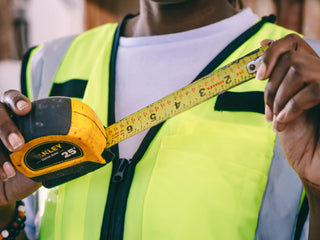The female condom symbolises empowerment, or at least that was the thought behind it when it became popular in the 90s. Invented by a Danish male doctor, Lasse Hessel (try saying Lasse Hessel with your mouth full), the female condom or Femidom has had its ups and downs.
We will look at the female condom, internal condoms and their history, give you the lowdown on how they work, and some interesting facts about this form of birth control, including some expert recommendations.
Table of Contents:
- The History of Internal Condoms
- What is a Modern Female Condom?
- Using Internal Condoms
- Where to Buy Female Condoms
- Facts about Internal or Female Condoms
- Expert Recommendations for Internal Condoms
- Internal and Female Condoms We Recommend
The History of Internal Condoms
There are some internet disputes about when female or internal condoms first appeared on the birth control scene, but reports say that farmers placed female condoms of sorts inside female sheep and cows to collect semen for animal husbandry and general breeding purposes at the beginning of the 18th century.
There’s also talk about female condoms in Ancient Greece and the nuptials of King Minos of Crete and his wife, Pasiphae. Poor Pasiphae would use a primitive internal goat bladder condom to protect her from her husband’s semen, which was made up of ‘serpents and scorpions’.
It sounds like a plain old-fashioned STI to me, but the son of Zeus and Europa might say that as his semen killed his mistress. Minos and his anthropoidal semen are mythology, but there’s some truth in the origin of the internal condom.
What is a Modern Female Condom?
A female condom is a pouch-like device made from nitrile (synthetic rubber), polyurethane, or latex (but not usually). This condom pouch fits inside the vagina and covers your cervix, preventing sperm from entering. A ‘ring’ at each end holds it in place: the inner ring sits at the closed end of the pouch and goes inside the vagina, while the outer ring sits outside.
The advantages of using female condoms over condoms men use include a NO erection clause, meaning you are not dependent on a partner’s erect penis to work. No wait times mean you can start using them before play begins. The outer ring helps with clitoral stimulation, leading to better orgasms for most women.
Research studies show that women using a Femidom and a male condom had better STI protection than those using a male condom alone. But the actual degree of protection from the Femidom is not known. Condoms do provide an effective barrier to micro-organisms but they are not 100% reliable.
Using a male and a female condom at the same time is not recommended. Female condoms are made of polyurethane so are latex-free. They are under the woman's control so if her male partner will not or cannot use a male condom, she has the opportunity to sue one and protect herself. Female condoms break and tear less often than male condoms.
In one study 14% of women complained of genital irritation after using a female condom. Some do complain they are noisy - like a rustling crisp packet! However, newer female condoms made of nitrites are said to be quieter (source).
Using Internal Condoms
When using female condoms, ensure you have the right size and type of condom before you start. The most common sizing is 178 mm long by 81 mm wide, but some manufacturers make other sizes if your partner has a penis bigger than 178 mm.
To use an internal condom correctly, follow our step-by-step guide.
- First, lubricate the outside of the internal condom.
- Insert the inner ring inside your vagina and push it up as far back as you can with one hand while you hold onto the outer ring with your other hand — just like you would insert a contraceptive cap or IUD.
- When comfortable, ensure the end that protrudes; the pouch covers all genital contact surfaces.
Finally, when you and your partner are ready to have sex, make sure his penis enters the condom pouch and not between it and the side of your vagina — side pouching is not easy, but it is possible to side pouch by mistake.
Where to Buy Female Condoms
You can get female condoms, internal condoms and Femidoms plus all sorts of lubricant from Condoms.uk.
Facts about Internal or Female Condoms
- Internal condoms are relatively inexpensive compared to some other methods of contraception they don’t require a prescription or measuring.
- Unlike male condoms, female or internal condoms allow both partners to feel everything during sex without reducing sensitivity while adding stimulus from the outer ring.
- You should use internal condoms with water-based lubricants, not silicone-based ones.
- Unlike male condoms, female condoms can be used erection-free, so you can use a female condom from the start of sex and don’t need to remove it immediately after.
- Female condoms may reduce the risk of STIs, such as gonorrhoea, chlamydia and possibly trichomonas. They give about the same level of protection as male condoms from HIV (source).
Expert Recommendations for Internal Condoms
- Make sure you use a new female condom every time you have sex, and check the expiration date on the package — this advice applies to male and female condoms. You should also check for the CE mark on the condom packaging or foil - meaning the product has been checked and tested to be sure it reaches safety and performance standards.
- Female condoms can slip or tear, just like male condoms, if not used correctly, so follow instructions before sex. Pre-sex trial and error apply here, so get a few packets just in case. The failure rate of the female condom in terms of preventing an unplanned pregnancy is 5% with perfect use, but 21% with typical use. If a woman really does not want to become pregnant, she is strongly advised to use a reliable method, easy to use method of contraception. Long-Acting Reversable Contraception (LARC - implants, injections, and intrauterine devices -coils) have over 99% reliability and can be inserted/fitted and more or less forgotten for 3 to 5 years (For more information please see: Your guide to LARC by Sexwise.)
- Always use plenty of lubricants when inserting an internal condom to reduce friction, reduce the risk of tears and avoid pesky irritation.
- Apply common sense and never use a female condom and a male condom together; it’s a disaster waiting to happen, apart from the fact it’s really uncomfortable.
- Like any other condom, when you’re finished, dispose of the internal condom in the bin and NEVER down the toilet.
Internal and Female Condoms We Recommend
We have an extensive range of female internal condoms, from the So Sexy Female Condom to Ormelle Female Condoms, that come in attractive pink foil packets. Uniq Air Latex Free Female Condoms are as light as air, and finally, Pasante offers an internal condom perfect for anal sex.
So why wait to get on board? Embrace your power, don’t wait for your man to get it on; get there first!





